Architects need not reply
-
@double espresso said:
The architectural guys certainly bring a lot of practical knowledge to the table, however, what I do is quite far outside that box.
hmmmmm.... I don't think you are as far outside the box as you think..... you design a set and show it to a director, architects design a building and show it to a client.
Maybe you should not exclude advice from architects so quickly. Do you really think that don't want to show clients a 3D walkthrough?
High on my wishlist is that someone would take the open source Quake 3 engine and create a free 3D SU walkthrough exporter. It would create a single EXE that clients could walkthrough the model using the AWSD keys and look around using the mouse. The spacebar would toggle to the flying no-clip mode that allowed you to go through walls.
-
@hazza said:
@double espresso said:
The architectural guys certainly bring a lot of practical knowledge to the table, however, what I do is quite far outside that box.
hmmmmm.... I don't think you are as far outside the box as you think..... you design a set and show it to a director, architects design a building and show it to a client.
Maybe you should not exclude advice from architects so quickly. Do you really think that don't want to show clients a 3D walkthrough?
High on my wishlist is that someone would take the open source Quake 3 engine and create a free 3D SU walkthrough exporter. It would create a single EXE that clients could walkthrough the model using the AWSD keys and look around using the mouse. The spacebar would toggle to the flying no-clip mode that allowed you to go through walls.
Hazza,
I have been doing this for more than 20 years, trust me, I know the differences between what I do and what an architect does. And please don't twist my words, I am not dismissing the invaluable input of architects. I thought I made that clear in my previous posts. Perhaps the heading threw you off... it was meant to be facetious. I like architects. I even had lunch with one last week...he stuck me with the bill. -
i find it to be great at the concept phase, especially if there aren't super fine details to resolve. I use it a lot - but almost never without photoshop post processing in the form of curves adjustment and painting. even if I've rendered in vray - (which is extremely fast and I would recommend.) I find that when working with an art director or production designer and they want to inevitably start making changes to your model, it is easier to resolve in paint. But a lot of people i know use it for quick turn around - commercials etc.
once i need to start really resolving form issues, color etc i have much more control in photoshop/painting. I find sketchup to be extremely difficult to create the detail i want. but that is just me.
I've seen a lot of great stuff form lightwave/modo/ etc but that is a different learning curve entirely.
-
Double - some of my stuff might be relevant. SU and Photoshop. Agree with your assessment that SU can only take you so far though, especially at the conceptual design stage. For basic blocking and perspectives though, it's a great tool.



[attachment/img=0]Untitled-2s.jpg[/attachment]
A.
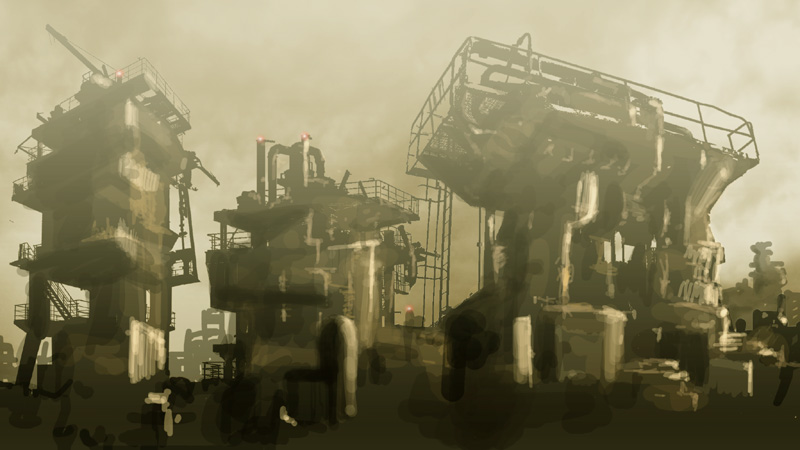
-
@unknownuser said:
High on my wishlist is that someone would take the open source Quake 3 engine and create a free 3D SU walkthrough exporter. It would create a single EXE that clients could walkthrough the model using the AWSD keys and look around using the mouse. The spacebar would toggle to the flying no-clip mode that allowed you to go through walls.
A while back a friend of mine got SU models (via 3d studio) into Oblivion and Crysis. Apparently Crysis was more hassle than it was worth. I think you have to mess about with sub directories to access the Crysis sandbox and then there are some on screen game windows that were difficult to hide. Together we had a go at importing into Oblivion and it was very simple. It was easy to get an SU model (via 3d studio) in there, nicely rendered (not as good as crysis though)and you can navigate with the cursors. The methods were copied from the links below. The Oblivion examples are great.
http://digitalurban.blogspot.com/search/label/Crysis (scroll down a bit)
-
@andyc said:
Double - some of my stuff might be relevant. SU and Photoshop. Agree with your assessment that SU can only take you so far though, especially at the conceptual design stage. For basic blocking and perspectives though, it's a great tool.
Andy,
Great stuff.Great energy! You are definitely taking SU to that filmic place I was looking for. Lets shoot it!
I agree that Sketchup is perfect for roughing out ideas and it also shaves hours off those foamcore models we did way back when (read five years ago - lol).
DE -
Well I read all the way to the end Greg
 .
.Really interesting post. Agree with your point about traditional hand-drawn production designs carrying a great deal more information than we can easily communicate with SU. Hard to see how software can bridge this gap.
Some really great images in your post too.
Andy.
-
@unknownuser said:
I need the power and wickedness of Modo, but with the hard surface modelling simplicity of SU
you hit the nail right on the head there.
great images! -
Greg,
Your points are right on the mark and it's really great to hear from those who work 'on the dark side' and see what they are doing. Great examples! Thanks.
DE -
Hi there,
I’ve been reading this post with great interest, and I would like to participate and say a few things too…
I work as an Art Director, and SketchUp has a very useful place in my workflow. I think I understand what you mean when you say that some people in the industry consider this tool as nothing more than 3d Lego. It does look like it I suppose, in its basic “out of the can” aspects…
I think it is fair to say that the process of “Production Design” for film or TV is a particular one, a profession with its own rules, techniques and specificities, but the same could be said about Architecture, Product Design, Interior Design and many other disciplines in the fields of applied arts. But all these professions also have loads of points in common. After all, the process of creativity, from concept to realization in any discipline is often about the same qualities of vision, organization, communication, team work, planning etc…
So, in reference to the Lego remark, the thing is with Production Design, it can be quite a conservative environment, and there are some good reasons for it.
I think a tool like SU (amongst a few other packages) is at the very centre of this state of things, the typical clash between the new digital knowledge and the traditional manual craft. There is a lot of that in our industry, especially in the art of drafting scenery, basically drawing the plans for construction.
This is one spot where Production Design is really quite different from Architecture. I won’t go into details, but those not too familiar with it, when creating a period film set for instance, there is a lot of information that goes through the pencil of a draughtswoman/man, beyond the structural aspect of the build, there are also quantities of details about surfaces, textures, effects and treatments of materials which are essential for the control of the final look of the set. This is an old tested reliable technique, which holds a solid position in the process of creating film sets. Hence, the conservative side of our industry I suppose. And maybe the reason why tools like SU can be looked at with a lot of scepticism… and maybe worries too.
The thing is, I don’t think there is a 2D/3D program that can really be fully adapted to our needs. Yet…
But SketchUp was pretty close I think. What I personally like about SketchUp, is that it put the tool of 3D in my hands and short cut the massive learning curve I’d have to go through with most of the other packages on the market (which is pretty much what the whole concept of SU is based on).
Another thing I enjoy when working with SU, is how it allows me to modify the creative workflow. One of the most traditional types of workflow would be to go from rough sketches and/or advanced concept visuals, to drafting the sets and then building white card models before green light is given for construction. Using SketchUp, based on those preliminary rough sketches, I will start sculpting the space directly in 3D. Pretty soon I have in my hands a very good representation of the set, we discuss it, we walk through it and consider the shots with the director and the team, storyboarding from precise spatial references straight out from the 3D model. Adjustments are easy, provided you built your model with that in mind. More details are gradually added to the model, and some particular shots are used for more advanced concept visuals and renders. At any time, I can produce elevations and initial plans, used for construction estimates. Eventually my model can be really quite precise, down to mouldings, windows, doors, and any other architectural details. From there, I can massively jump start the process of drafting. Unfortunately, at this point SU starts to reach the limits of what it can do for me, so I use VectorWorks for the plans, Vray and/or (more and more) Modo for more advanced organic modelling and rendering.
I do think that the 3D model when used judiciously is a fantastic tool to communicate and discuss the project in the pre-production phase of a film.
Like I said, I don’t think there is a product that can give me all I need in one package. This is a bit frustrating sometimes, as I feel that it wouldn’t take much to make it happen. I need the power and wickedness of Modo, but with the hard surface modelling simplicity of SU, and then be able to produce sweet renders like Modo can, and also simple technical elevations and views with measurements like VectoWorks (or SU and Layout if only it had more muscle). That would be a revolution. So until someone puts all that together, I’ll keep switching between programs like everybody else I guess!
I’ll try to attach some examples of work to illustrate my (far too long) post.
Anyway, I could go on and on, but I’ll be amazed if anyone has actually managed to read all that text…
Take care,
Greg.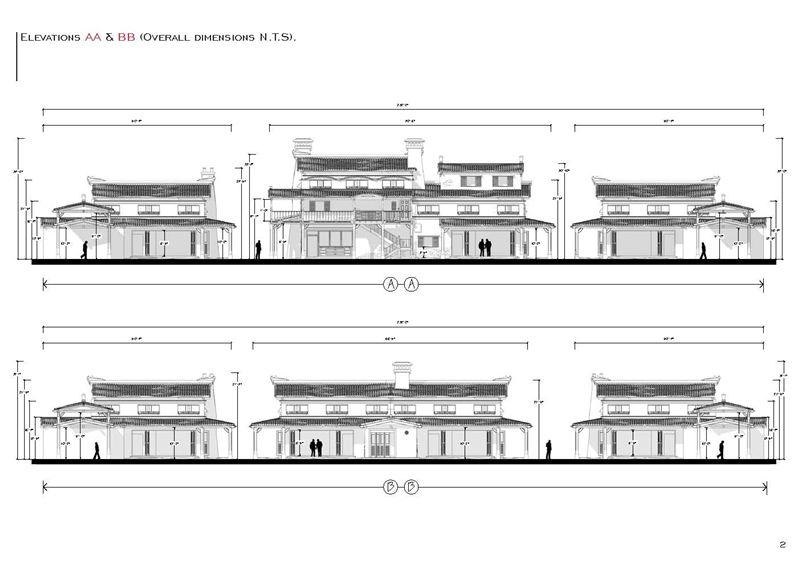
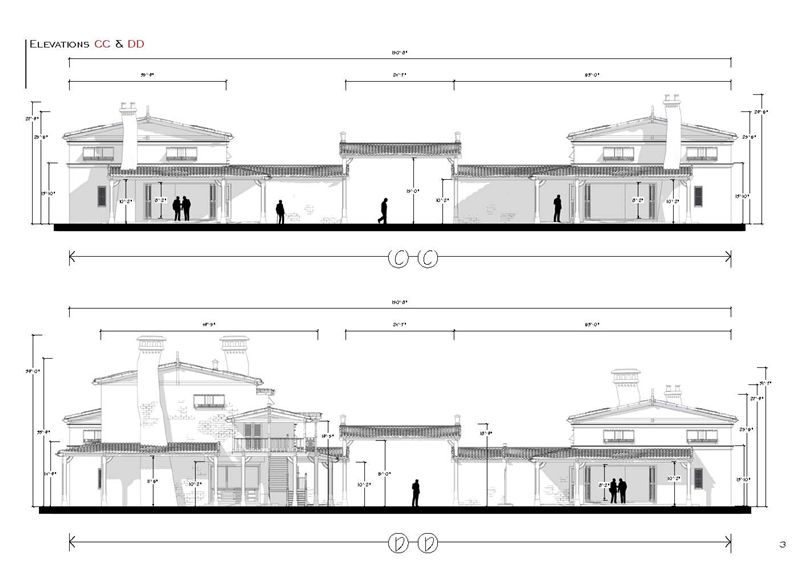
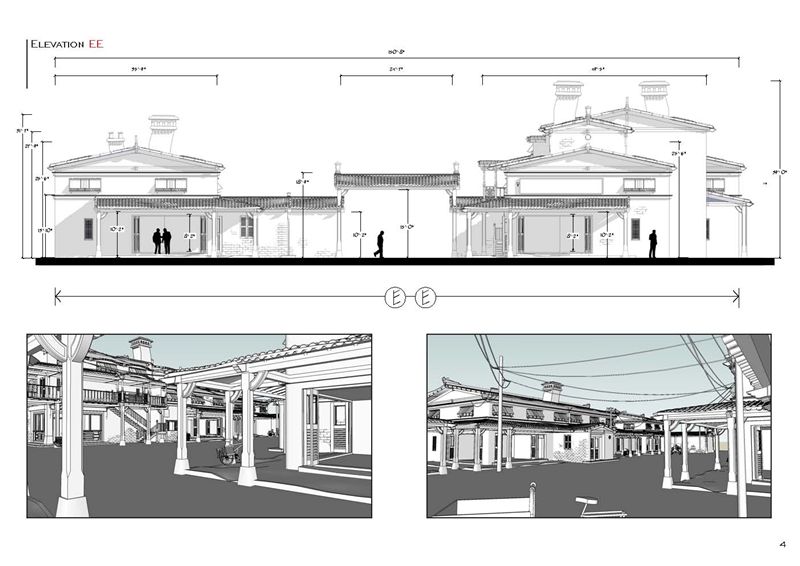

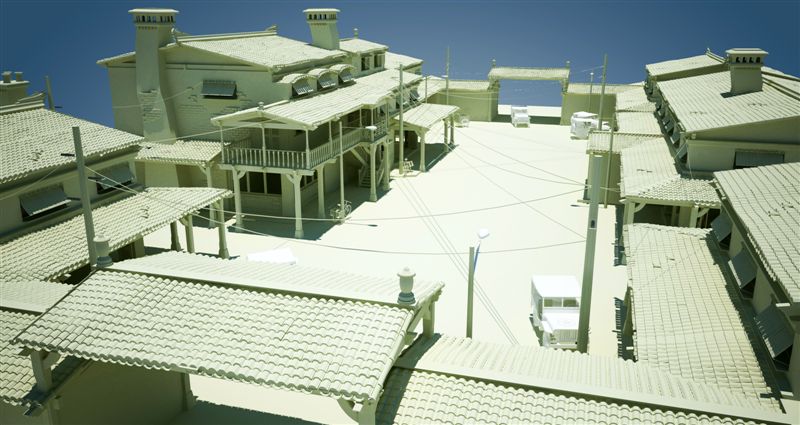
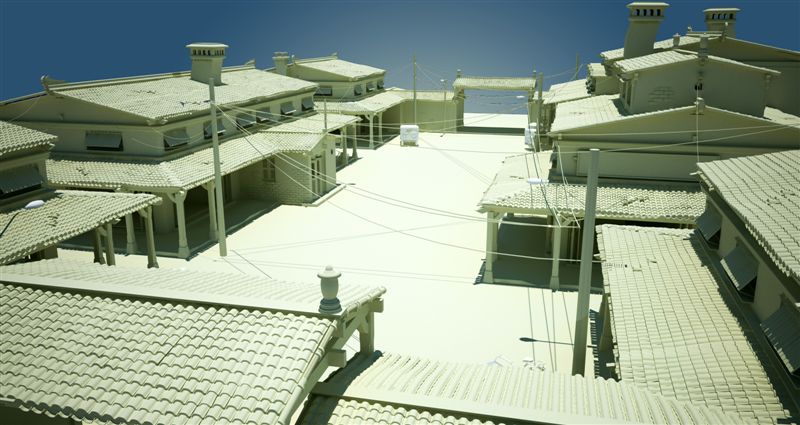
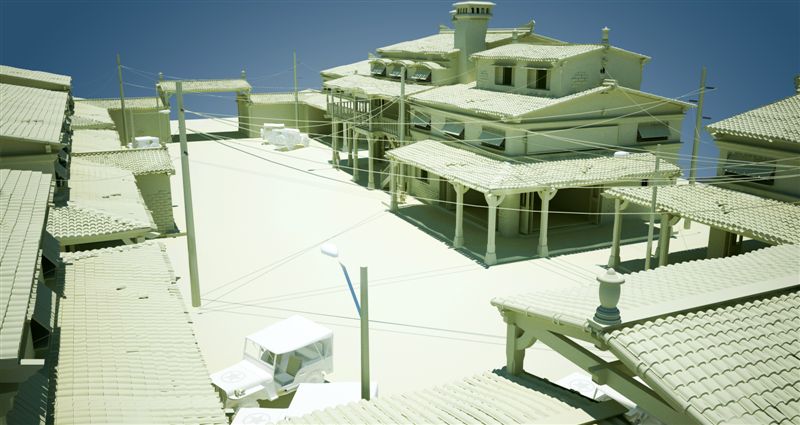
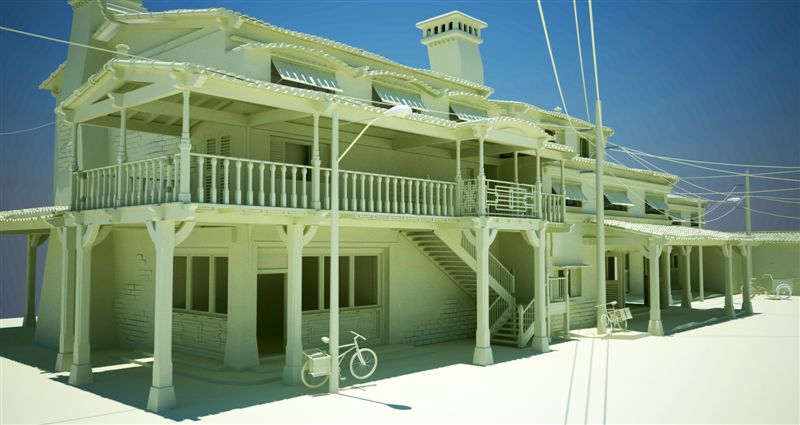
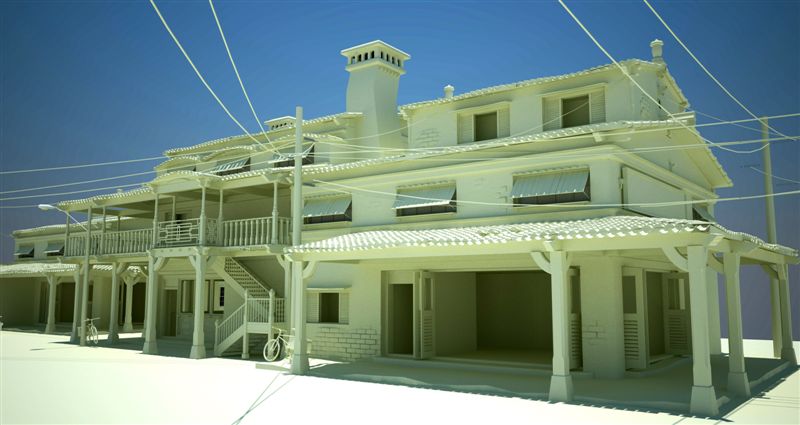
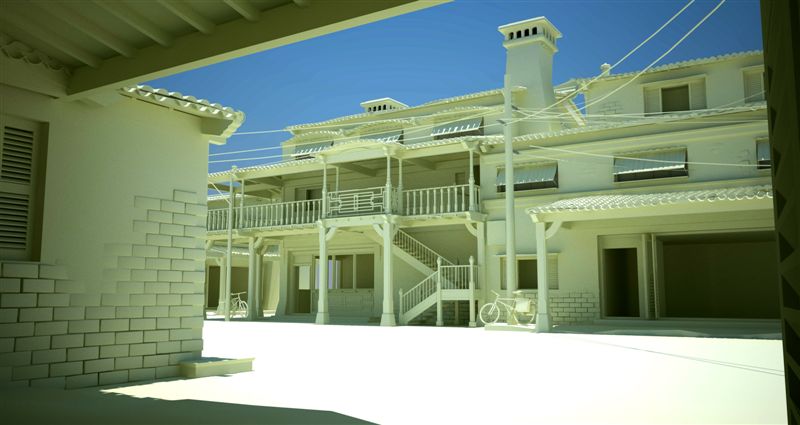

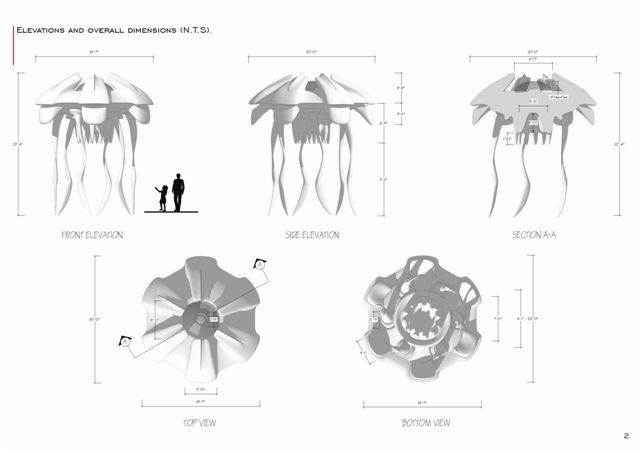
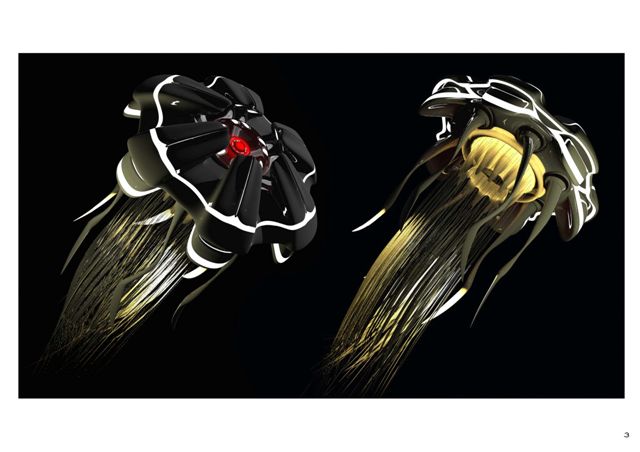
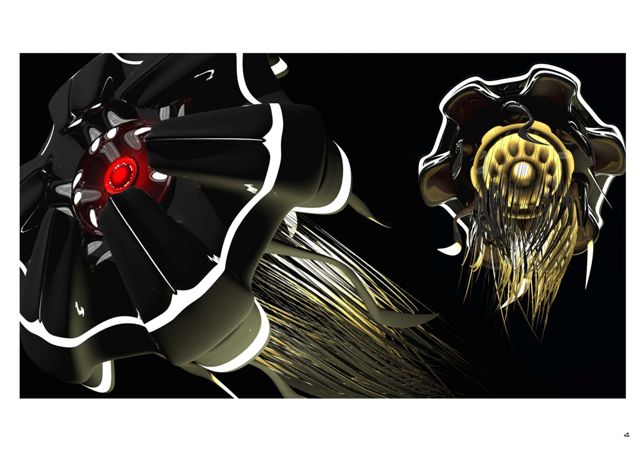

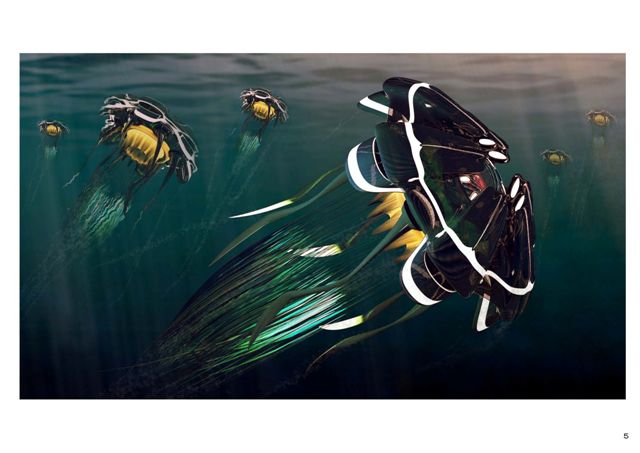
-
...In fact I'm thinking that maybe I'd like to generate a new thread based on our discussion here...
One focused on "workflow" and how people combine different tools and how they integrate SU in their design process...
I think I'll give it a go, might have to repost some of the stuff I've shown here... -
i would certainly enjoy reading that thread.
I would love to see what different combinations of programs can achieve. -
such a thread would be fantastic indeed. I am a student of architecture. but my true love is and always as been film (and everything that is connected with its production)...
getting some first hand info would be amazing) -
@unknownuser said:
but I’ll be amazed if anyone has actually managed to read all that text…
I have and with great interest and I usually skip these long threads.
Great work guys thanks for sharing all this great work and keep posting.
-
@gf.greg said:
...In fact I'm thinking that maybe I'd like to generate a new thread based on our discussion here...
One focused on "workflow" and how people combine different tools and how they integrate SU in their design process...
I think I'll give it a go, might have to repost some of the stuff I've shown here...I think that's a stellar idea. Let's see what people who think 'outside the box' come up with. Architects are welcome.
DE
Advertisement








